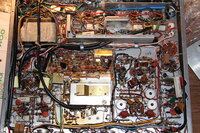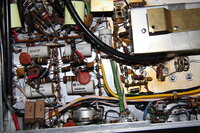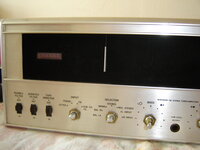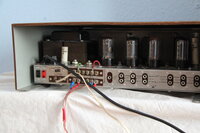scott 340b

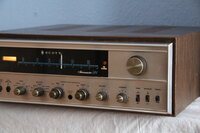
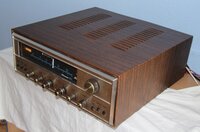


The dimensions of the receiver are (the first two dimensions are for the front panel) 42 cm (width) x 14 cm (height) x 35 cm (depth). Sonically, the 340B is something for lovers of a stronger impact. The company used bandwidth control in the feedback circuit, therefore the "bass" and "treble" are regulated by - + 12 dB. If you add the "physiological" boost to this with a switch on the voice potentiometer, hardly any loudspeaker can carry such a "low" and strong signal. The phono equalizer preamplifier is a successful design on two 12AX7 / ECC83. The receiver also has an additional "EXTRA" input and a separate set of inputs and outputs for a tape recorder. The drivers of the power tubes are the well-known 6U8 / ECF82 (originally most of the tubes were TELEFUNKENs). The tuner provides excellent sensitivity, and the MPX decoder is something that has always distinguished SCOTT. Built on the ECC81 / 12AT7, ECC83 / 12AX7 and 6KE8, it provides excellent separation and full “mono / stereo” automation with a weaker signal. On the back of the Chassi, there are two cables for changing the impedance of the speakers, respectively 4, 8 and 16 ohms. by the way, the Japanese did not use 4 ohms. The appearance of the receiver is more in keeping with the design of the 70's. All knobs are Bakelite with brass "caps". Unfortunately, glue, unlike lamps, often did not stand the test of time and you often have to buy and stick these covers (this also applies to the FISHER construction). Air assembly looks interesting, assembly quality "military", equipment on decent components, without the infamous oil capacitors. But lest it were too good, the aggregate (capacitor on the anode power supply) lost its capacity and the receiver got "hum". The entire chassis is made of an aluminum sheet supported in some places by copper. SCOTT wrote that the use of non-magnetic aluminum reduces the level of noise and rumble, and the addition of copper plate in some systems improved the parameters of the electronics. The equipment works without too much interference as it was 40 years ago. In the 1960s, a lot of audio equipment was manufactured to be mounted in consoles or walls. The Americans appreciated wooden cases more. The housing in this model is a modern metal production covered with a wood-like foil.

